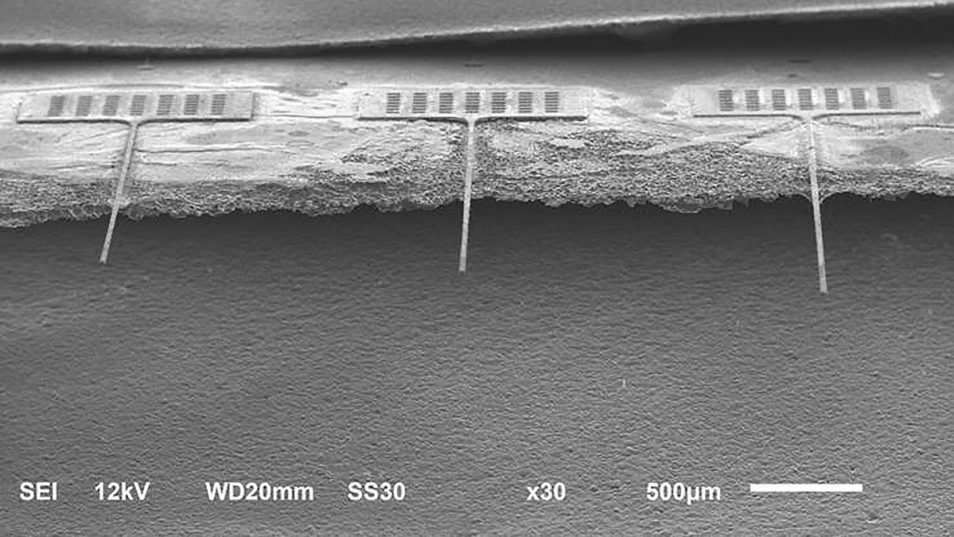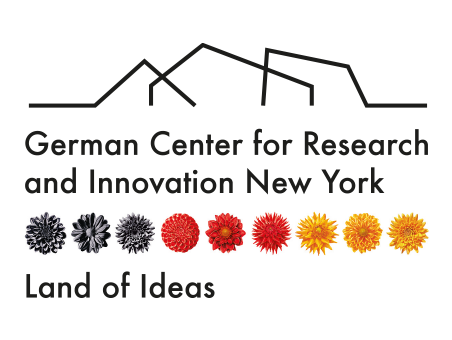Brain Health and Research using Boron-Doped Diamond Electrodes
 © Fraunhofer USA CMW
© Fraunhofer USA CMW
At Fraunhofer USA, we’re conducting brain research into the use of Boron-Doped Diamond Electrodes targeting biotechnology, environment and health applications.
A brain weighs only a few pounds and contains over 100 billon neurons, with over 100 trillion connections, and has over 100 different types of neurotransmitters. As such, it can process an almost unlimited amount of information.
At Fraunhofer USA, we’re on the cutting edge of brain health and research. Our work on Boron-Doped Diamond (BDD) electrodes is just one example of our many multidisciplinary applied research projects.
Researchers at Fraunhofer USA Center Midwest can build a wide range of diamond electrodes to meet a variety of sensing needs. These electrodes can range from large 1 x 1 cm2 squares to smaller 3 mm diameter discs and can be decreased all the way down to 10 µm wide single working electrodes. We also can fabricate individually addressed arrays of electrodes, or combined electrode microarrays sensing areas as small as 2 µm diameter pores. Using these electrodes, we can measure heavy metals in solution such as lead, cadmium, copper and mercury, as well as biological measurements, such as dopamine and serotonin, among others!
Diamond can be fabricated to be both insulating and conductive. Through having an insulating shell and conductive core, we can fabricate all diamond electrodes, which are biocompatible. Over the past two years in collaboration with Michigan State University, we have been further developing these electrodes to measure dopamine. Using these tools, we can begin to study neurodegenerative diseases such as Parkinson’s and Alzheimer’s. There is a great need for new tools to be developed, so that we can better understand the inner workings and inner connectiveness of our brain, so that new treatments are developed for these debilitating diseases.
Real-time in vivo measurements of dopamine have been around since the 80’s however, the electrode materials utilized have a finite in vivo lifetime and often have rigid mechanical properties, damaging the surrounding biological tissue. Materials need to be developed and optimized to be both biocompatible while possessing mechanical properties that don’t harm biological tissue, and diamond is one such material. A chemically inert and biocompatible material, diamond, can possess mechanical properties and be tailor-made to flex and move with surrounding tissue.
A diamond is forever and a BDD electrode has a wide potential window and allows for a chemically stable material to provide real-time in vivo neurotransmitter measurements.
This research area still has challenges, however, such as increasing the number and variety of molecular targets to investigate, as the community learns of new neurotransmitters. Instrumentation challenges remain as well, such as converting single electrodes into arrays to study brain regions, rather than localized neuron clusters, which is a fabrication challenge. Other potential expansion areas include increasing electrode sensitivity to dopamine and changing the size and geometry of the electrode for different uses. Current electrode sensing materials encounters poor target selectivity, poor signal-to-noise ratios, limited electrochemical channels and often degrade over time.
To overcome these barriers, BDD electrodes should evolve to consider larger, customized electrode geometries, with arrays for multichannel measurements that can be batch fabricated, rather than hand fabricated. Applications for different signaling modality measurements such as electrophysiology should also be considered with surface modifications to the diamond to expand sensing capabilities. Producing a sophisticated sensing interface technology must include consideration to stability, biocompatibility, scalability and more.
Our researchers have met this challenge head on, most recently collaborating with Michigan State University on a National Institutes of Health (NIH) project to develop diamond-based neural probes to discover new biomarkers and therapeutic targets for neurodegenerative diseases as well as substance use and mental health disorders.
To learn more about the work we’re doing on BDD electrode research, visit the Fraunhofer website.
Contact: Michael Becker, Division Manager – Coatings and Diamond Technologies, Fraunhofer USA Center Midwest CMW
